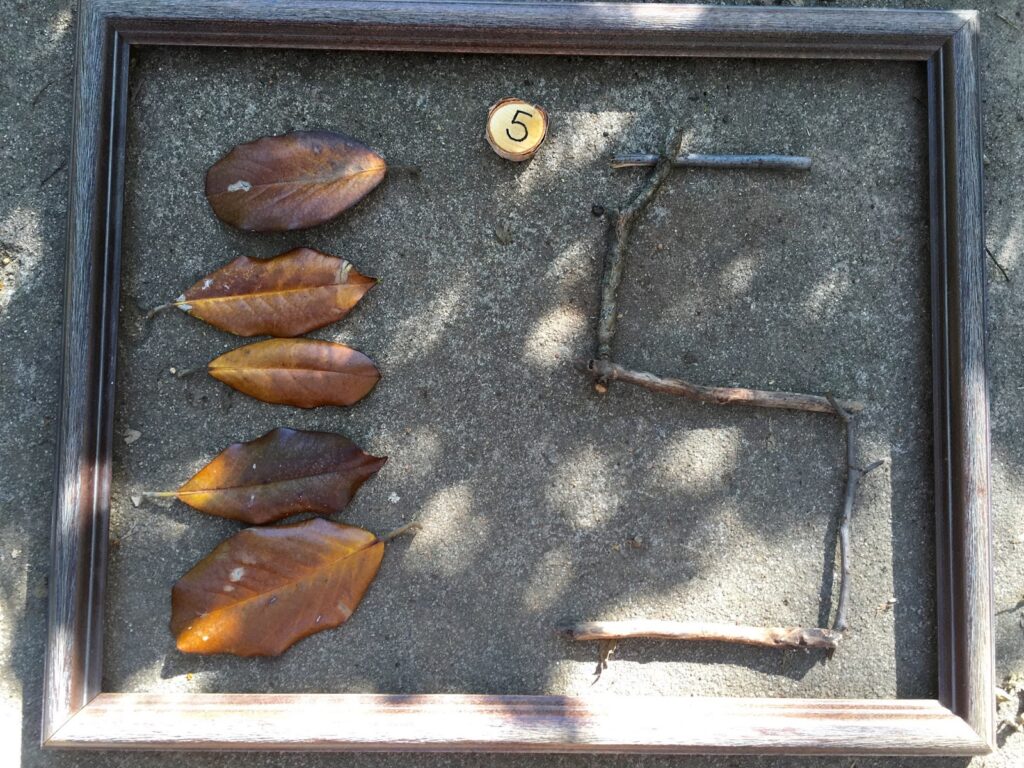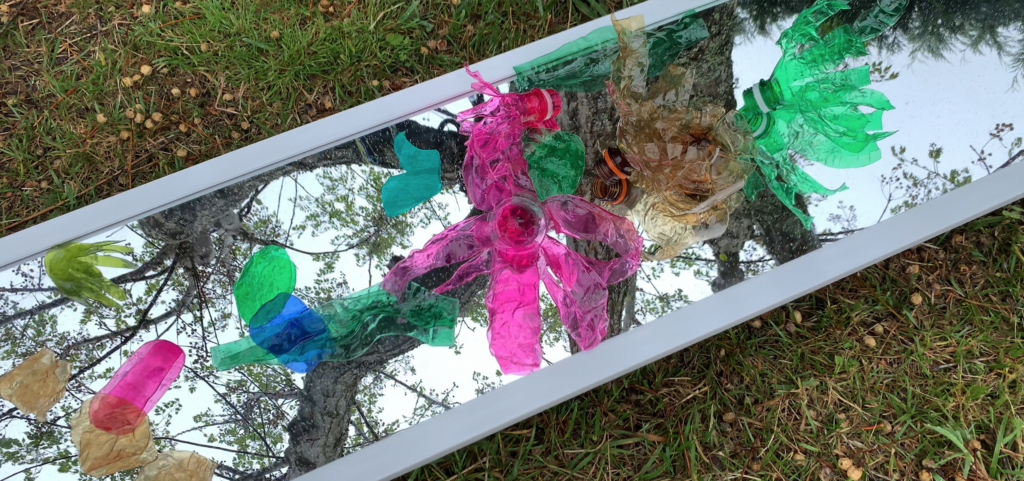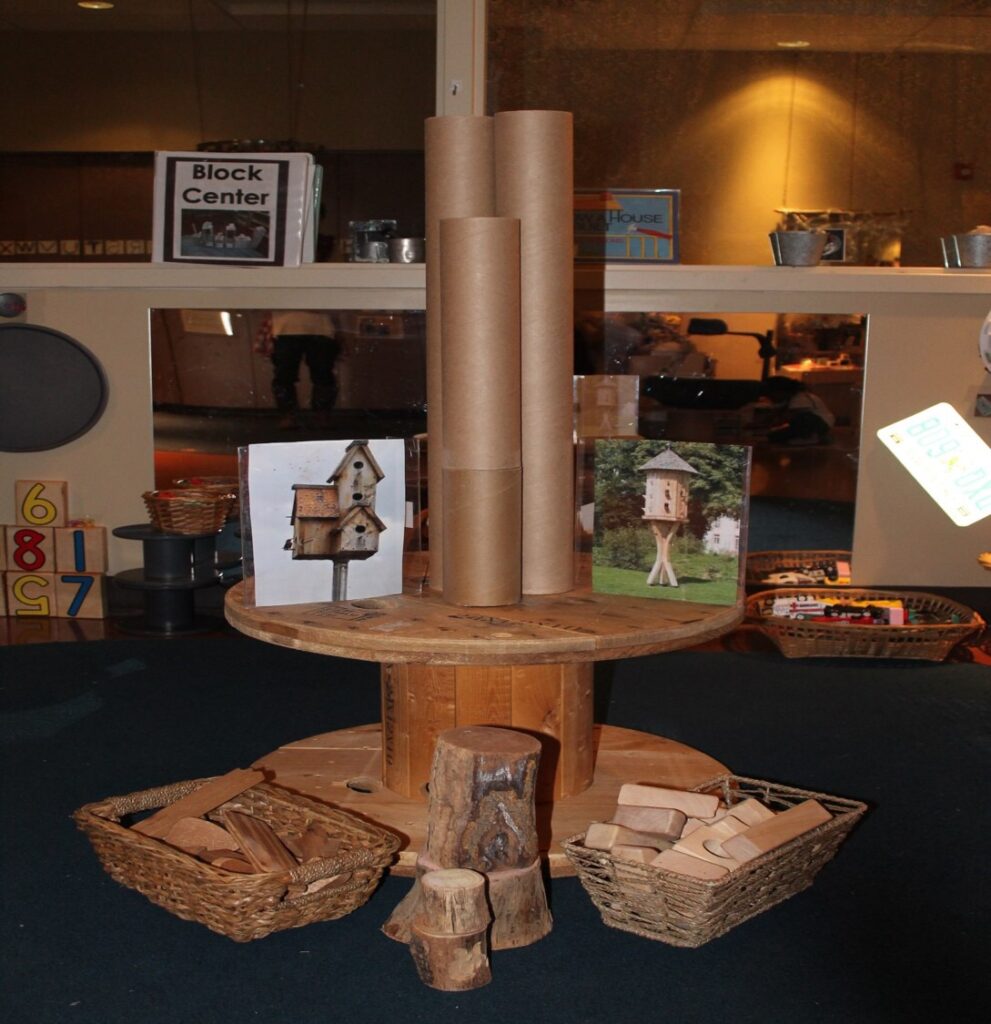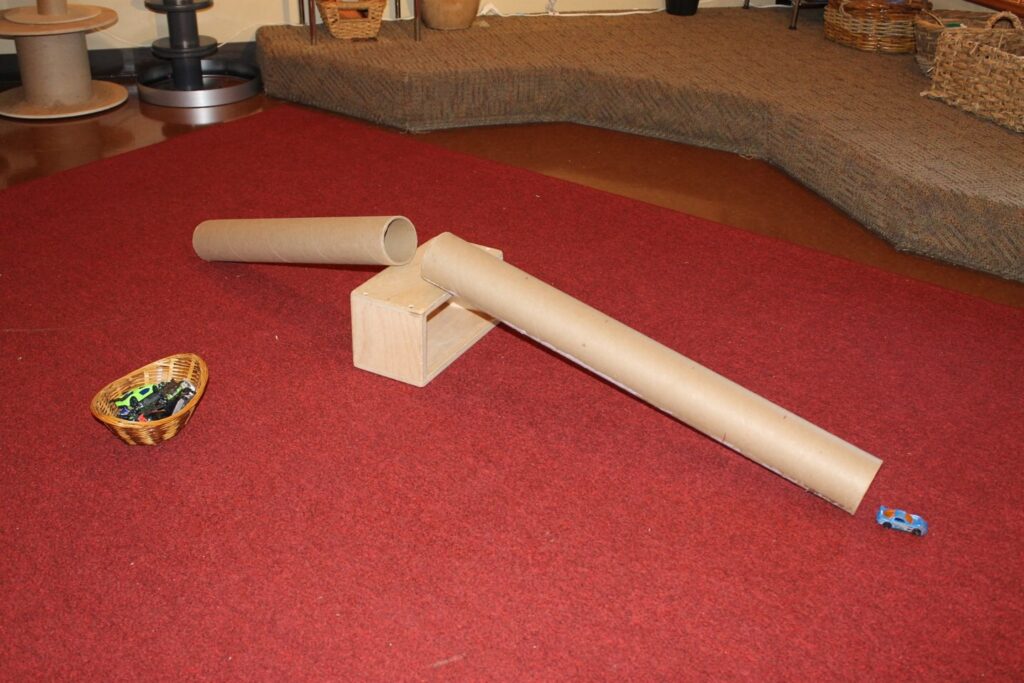Loose parts and authentic play experiences for children are two vitally important initiatives for Wunderled™. But many administrators and supervisors question whether loose parts can support academic learning. That’s why I want to share some inspiring invitations and provocations with loose parts that demonstrate the academic value of loose parts.
Intentionally plan with Loose Parts
We don’t plan activities solely to meet academic objectives. Instead, we prioritize creating experiences that meet the unique needs and interests of each child. By observing the children during play, we gain insight into their development and what interests them. We then use these observations to identify their academic learnings that we can support through intentional play invitations. In this way, we allow the child to take the lead in their own learning, while also providing guidance and support to help them develop to their full potential.
By providing open-ended play opportunities with loose parts, children have the freedom to explore and experiment in their own way, leading to diverse outcomes that reflect their individual strengths and interests. That’s why the same play invitation can take children to develop different skills and academic learnings from each other based on their individual interests and abilities.
Therefore, it’s essential to embrace and celebrate the diversity of learning experiences and outcomes that emerge from the same play invitation.

What skills are available in loose parts play?
- Problem-Solving
- Engineering
- Creativity
- Concentration
- Hand-eye coordination
- Fine motor development
- Gross motor development
- Language and vocabulary building
- Mathematical thinking
- Scientific thinking
- Literacy
- Social/emotional development
The list goes on and on…
Let’s take a deeper look at some play invitations and provocations to see specifically what learning objectives are really being met. The opportunities are endless and specific to your group of children.
For practical and easy ways to make loose parts play a part in your child’s daily routine, check out our latest blog post for all the tips and tricks you need to know!
Outdoor Loose Parts Play

Materials: Sticks and logs in nature
Academic Learning Opportunities: Literacy, knowledge of the alphabet, cognitive, inventiveness of thinking, persistence, and science skills in nature.

Materials: Rocks, water, paintbrush
Academic Learning Opportunities: Literacy, writing, fine-motor skills, knowledge of the alphabet, cognitive, inventiveness of thinking, persistence, artistic expression.

Materials: Sticks, leaves, and wood cookies with numbers written on
Academic Learning Opportunities: Math, knowledge of numbers, cognitive, inventiveness of thinking, persistence, classifying, thinking symbolically.

Materials: Rocks and wooden cookies with numbers written on
Academic Learning Opportunities: Math, knowledge of numbers, cognitive, inventiveness of thinking, persistence, classifying, sorting.

Materials: Thread in various colors
Academic Learning Opportunities: Understand form and function, build on their gross and fine motor skills, reach and flexibility, and visual-spatial relationships, collaboration and cooperation, and explore lines, structure, pattern, composition, and contrast.
Explore this play invitation here: Exploring Spiderwebs.

Materials: Leaves of all colors
Academic Learning Opportunities: Math, identifying color, sorting, classifying, cognitive development, inventiveness of thinking, persistence, and science skills.

Materials: Toilet paper
Academic Learning Opportunities: describe and compare lengths and shapes, engage in exploratory and imaginative play, build on their motor skills and visual-spatial relationships, and explore one of the elements of art – Line – in an original and tri-dimensional way.
Explore this play invitation here: Exploring Big-Scale Lines.

Materials: Natural materials such as rocks, bark, dirt, kitchen utensils
Academic Learning Opportunities: Social/emotional skills, interacting with peers, math skills, spacial awareness, cognitive development, inventiveness of thinking, engaging in sociodramatic play, science skills in nature.

Materials: Colored cellophane paper
Academic Learning Opportunities: Hypothesising, predicting, and exploring cycles and change, building on their motor skills, working in different positions, and visual-spatial relationships, developing creativity and ways of seeing, exploring color and perspective.
Explore this play invitation here: Investigating the Colors of the Sky.

Materials: Repurposed plastic bottles and mirrors
Academic Learning Opportunities: Creative thinking, imagination, problem-solving, language and storytelling skills, visual perception, fine motor skills, hand-eye coordination, experimenting with light, color, and texture.
Indoor Loose Parts Play

Materials: Wooden blocks and people, light rope
Academic Learning Opportunities: Math skills, Combining shapes, lines, and volumes, exploring quantity, size, position, and direction, playing with light and shadow, collaboration and cooperation, making decisions, and developing self-expression and creativity.
Explore this play invitation here: Exploring City Night Lights.

Materials: Cardboard tubes, logs, blocks, and wood
Academic Learning Opportunities: Cognitive development, inventiveness of thinking, persistence, thinking symbolically, math skills, measuring, language skills, and solving problems.

Materials: Fan, polythene dust sheet, or a piece of light fabric, tape
Academic Learning Opportunities: Explore rhythm, speed, line, and direction, engage in exploratory and imaginative play, develop motor skills and spatial awareness and rhythm, and explore new materials.
Explore this play invitation here: Movement in Lightweight Materials.

Materials: Straight and curve wood sticks, cars (or other loose parts to make modes of transportation)
Academic Learning Opportunities: Cognitive, inventiveness of thinking, persistence, make connections, math skills, shapes recognition and creation.

Materials: Cd’s and metal loose parts such as washers, nuts, bolts, etc
Academic Learning Opportunities: Fine motor skills, cognitive development, artistic creation, language skills while describing creation, math skills, counting, and shape recognition.

Materials: Jenga blocks with pictures of children and large building blocks
Academic Learning Opportunities: Cognitive development, inventiveness of thinking, persistence, problem-solving, social skills, social studies in understanding people and places they live, math skills, thinking symbolically.

Materials: Natural materials such as leaves, sticks, nuts, rocks, paper, pencil
Academic Learning Opportunities: Literacy and math skills, patterns, fine motor skills, cognitive development, making connections, sorting, and artistic representations.

Materials: Wood stumps, blocks, cd’s, metal candle holders, and a variety of unique loose parts
Academic Learning Opportunities: Cognitive development, inventiveness of thinking, persistence, math skills, measuring, shape recognition, literacy with storytelling.

Materials: Metalic loose Parts, flashlights
Academic Learning Opportunities: Exploring light, reflection, color diffraction, angle of incidence, cause and effect, hand-eye coordination, and artistic development by exploring new tools and materials.
Explore this play invitation here: Finding the Colors of Light.

Materials: Jenga blocks and different size wood pieces
Academic Learning Opportunities: Literacy, knowledge of the alphabet, cognitive, inventiveness of thinking, persistence, shape creation, math skills, counting.

Materials: Cardboard tubes, blocks, cars, or balls
Academic Learning Opportunities: Cognitive development, problem-solving, inventiveness of thinking, persistence, math, and scientific inquiry skills.

Materials: Can lids, bolts, screws, and other metal loose parts
Academic Learning Opportunities: Math skills, counting, shape recognition and creation, cognitive development, inventiveness of thinking, persistence, and language while describing actions.

Materials: Corks, Jenga blocks with numbers, blocks
Academic Learning Opportunities: Math skills, shape recognition and creation, cognitive development, inventiveness of thinking, drawing skills, spatial skills.
These are just a handful of the powerful ways loose parts can help ignite the flame of curiosity and creativity in our children as well as meet the rigorous requirements set forth in our schools.
Have you ever wondered what loose parts play is all about? Our comprehensive guide has everything you need to know including the benefits for children’s development and great tips on how to start your loose parts collection!
if you use social media, please share some of your favorite loose parts invitations and how children are meeting academic learning in authentic play-based ways! Don’t forget to tag us @wunderledteaching
References
Carter, Margie (2011). Helping Teachers Address Academic Learning. Exchange: The Early Childhood Leaders’ Magazine, n201 p18-21 Sep-Oct.
Drew, Walter F.; Rankin, Baji (2004). Promoting Creativity for Life Using Open-Ended Materials. YC Young Children, 59, 4. ProQuest Education Journals pg. 38.
Klugman, Edgar; Smilansky, Sara (1990). Children’s Play and Learning: Perspectives and Policy Implications (Early Childhood Education Series). Teachers College Press.
Lindeman, Karen W.; Anderson, Elizabeth M.. (2015). Using Blocks to Develop 21st Century Skills. Young Children 70 (1): 36-43.


